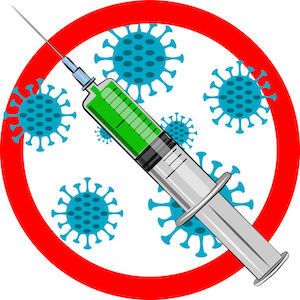By Dr. Ken Broda Bahm:

Sometimes, in the task of communicating technical or scientific information to the public, something can be lost in the translation. Of course, that is often a challenge for expert witnesses in courtroom settings, but currently, we are seeing it play out on the national stage. As the coronavirus vaccine is being rolled out, there is still enough resistance to jeopardize the herd immunity that health experts are seeking. Some polling even suggests that nearly half of us would refuse the vaccine if it was offered to us today. According to a recent article in The New York Times, the reason for that caution boils down to the nuance in the public messaging that the doctors have been giving us. As summarized in the article, that message is:
The coronavirus vaccines aren’t 100 percent effective. Vaccinated people may still be contagious, and the virus variants may make everything worse. So don’t change your behavior even if you get a shot.
So, consistent with their training, the experts are erring on the side of caution in order to stress that “The vaccine is not a get-out-of-Covid-free card!” That is truthful, but it also has a perverse effect. It doesn’t convey the reality that the two-shot regimen virtually eliminates the chance of a serious case of Covid-19, and as a result, people are left with the idea that the vaccine doesn’t really help that much. The Times article quotes Kate Grabowski, an epidemiologist at Johns Hopkins, who says the message from experts is being misinterpreted: “That’s on us. We’re clearly doing something wrong.” The columnist, David Leonhardt, further explains the vaccine alarmism, “Many academic experts — and, yes, journalists too — are instinctively skeptical and cautious. This instinct has caused the public messaging about vaccines to emphasize uncertainty and potential future bad news.” The lesson, to be taken to heart by expert witnesses, is that the best intentions don’t always make for the best communication, particularly when paired with the public’s incomplete understanding of science. In this post, I will share three lessons we can take from the communications on the vaccine.
Be Careful with Your Cautions
Academics are trained to downplay certainty, to avoid absolutes, and to consider the ways that they might be wrong. That is what it means to be a critical expert. If you look at the traditional academic paper or article, it ends with a section often called “limitations,” which includes a listing of all of the reasons that the research and its conclusions may not be broadly applicable, and why further research needs to be done. To the individual unaccustomed to that ritual, it can sound like the author is saying, “Okay, after all of that, this research is unreliable and means nothing.” Realistic and truthful cautions and limitations can be misinterpreted. For that reason, experts who are testifying or otherwise speaking to a general audience, need to put things in perspective. The message should be two-fold:
Here is what I am confident about…
and here is where there is still some room for uncertainty….
Hopefully, the first part is greater than the last and contains the conclusions that a jury or the public would need to rely on.
Teach Away from the Binaries
People can sometimes see safety in binary terms — you are either “safe” or “unsafe.” That is the mental shortcut that is successfully exploited by the plaintiff bar’s Reptile approach to legal persuasion, focusing as it does on whether the defendant, through their actions and decisions, kept the plaintiff “safe” or made the plaintiff “unsafe.” The idea of relative risk — i.e. a defendant who wants to reasonably manage or minimize the plaintiff’s risks while still meeting the plaintiff’s goals — is the answer to that artificial binary. But legal communicators need to acknowledge that the simpler version (“safe” or “unsafe”) is easier to grasp and has intuitive appeal since people want to believe that they can be protected.
As a result, when communicating this idea that risk isn’t black and white but instead ranges along a spectrum of grays, experts need to be explicit. They need to explain that it isn’t that simple, as much as we might want it to be. They also need to be practical, however, and emphasize that, even in the absence of certainty or perfect safety, we still know enough for both parties (patients and doctors, for example) to have a firm foundation for a decision.
Focus on the Action Step
The New York Times article ends by considering the question of what the public messaging on the coronavirus vaccines ought to be. The answer should focus, not just on knowledge and understanding, but on action. According to the Johns Hopkins epidemiologist, Kate Grabowski, that message in plain terms should be the following:
They’re safe. They’re highly effective against serious disease. And the emerging evidence about infectiousness looks really good. If you have access to a vaccine and you’re eligible, you should get it.
Critically, that message focuses not just on what we know, but on what we should do with that knowledge. That same focus applies to the expert witness. Not wanting to be advocates, some experts sill shy away from explicit implications for the factfinder. The implicit focus is, “I’m just here to share my conclusions, and it isn’t my job to tell you what to do.” But I think the better frame is that of a teacher. The pupil is always free to agree or not, but a good teacher will focus on the action step: Here are the best steps you can take in reasoning your own way to a good conclusion.
______
Other Posts on Scientific Testimony:
- Scientific Testimony: Don’t Rely on Shortcuts
- Follow 10 Simple Rules for Pretrial Research and Scientific Testimony
- Consider COVID Attitude Changes, Part 4: More Polarization on Science